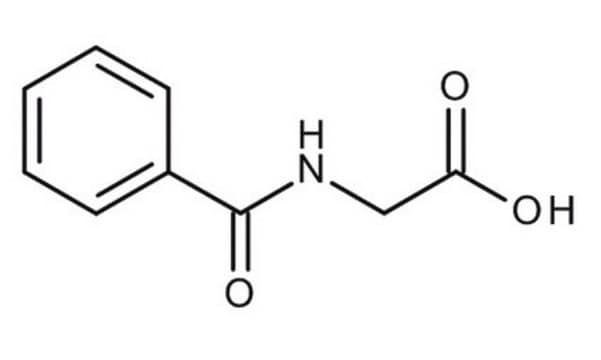68069
Hippuric acid
analytical standard
Synonyme(s) :
N-Benzoylglycine, Benzoylaminoacetic acid
About This Item
Produits recommandés
Qualité
analytical standard
Pureté
≥97.5% (GC)
Durée de conservation
limited shelf life, expiry date on the label
Pf
187-191 °C (lit.)
Application(s)
clinical testing
Format
neat
Chaîne SMILES
OC(=O)CNC(=O)c1ccccc1
InChI
1S/C9H9NO3/c11-8(12)6-10-9(13)7-4-2-1-3-5-7/h1-5H,6H2,(H,10,13)(H,11,12)
Clé InChI
QIAFMBKCNZACKA-UHFFFAOYSA-N
Vous recherchez des produits similaires ? Visite Guide de comparaison des produits
Catégories apparentées
Description générale
Application
- Human biological fluids using high-performance liquid chromatography (HPLC) with UV detection.
- Human and rat urine samples using gas chromatography–mass spectrometry (GC–MS).
- Human urine samples using GC equipped with a flame ionization detector.
Produits recommandés
Code de la classe de stockage
11 - Combustible Solids
Classe de danger pour l'eau (WGK)
WGK 3
Point d'éclair (°F)
Not applicable
Point d'éclair (°C)
Not applicable
Choose from one of the most recent versions:
Déjà en possession de ce produit ?
Retrouvez la documentation relative aux produits que vous avez récemment achetés dans la Bibliothèque de documents.
Les clients ont également consulté
Notre équipe de scientifiques dispose d'une expérience dans tous les secteurs de la recherche, notamment en sciences de la vie, science des matériaux, synthèse chimique, chromatographie, analyse et dans de nombreux autres domaines..
Contacter notre Service technique













